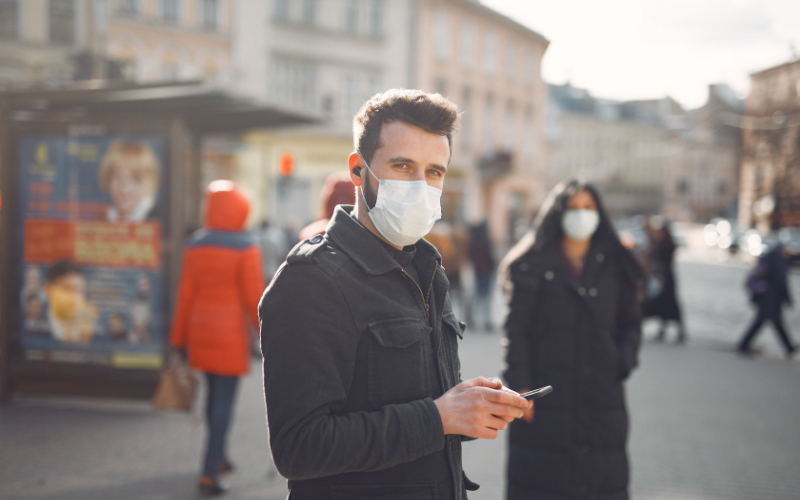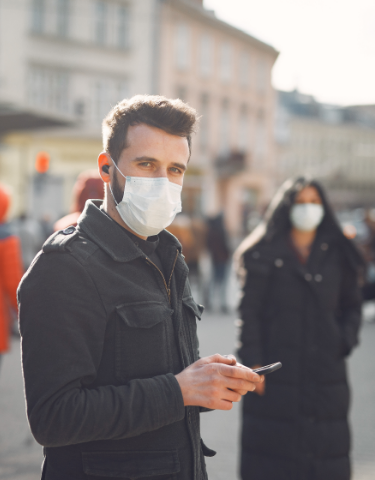In the global discourse on environmental hazards, pollution risk is often discussed in terms of visible smog in the air, oil slicks on water, or plastic waste littering natural landscapes. However, the true extent of pollution’s danger is far more insidious and pervasive than these overt signs suggest. The risk associated with pollution impacts every facet of our ecosystem, economy, and personal health, and it often does so in ways that are less apparent but deeply consequential. The current situation in Delhi and Mumbai is a wake-up call to develop effective response strategies.
Hidden Health Hazards: Pollution’s impact on health extends well beyond the well-known effects of poor air quality. For instance:
– Microscopic Particulates: Airborne pollutants include ultrafine particles that can penetrate deep into the lungs and enter the bloodstream, causing systemic inflammation, cardiovascular diseases, and exacerbating respiratory conditions like asthma.
– Chemical Exposure: Individuals can be exposed to harmful chemicals through drinking water contaminated by industrial waste, air polluted with volatile organic compounds (VOCs), and even through the absorption of pollutants in the skin.
Ecosystem Disruption: Pollution also has far-reaching effects on biodiversity and ecosystems:
– Soil Degradation: Chemical runoff from agriculture and industrial activity not only contaminates waterways but also leads to soil degradation, reducing agricultural productivity and affecting food security.
– Ocean Acidification: The ocean absorbs a significant portion of atmospheric CO2, leading to acidification which disrupts marine life, particularly organisms with calcium carbonate shells or skeletons, impacting the entire marine food web.
Economic Costs: The economic ramifications of pollution are staggering:
– Healthcare Burden: The direct link between pollution and diseases increases healthcare costs. Chronic conditions induced or exacerbated by pollution lead to loss of productivity and a greater financial burden on families and health systems.
– Loss of Biodiversity: As pollutants decimate species and degrade ecosystems, they erode the natural capital upon which economies depend for resources like fish, timber, and pollination of crops.
Climate Change Acceleration: Pollution, particularly greenhouse gas emissions, is a significant driver of climate change, with effects that are broad and potentially catastrophic:
– Extreme Weather Events: Increased air and ocean temperatures lead to more frequent and severe weather events, which cause massive damage to infrastructure, economies, and human lives.
– Rising Sea Levels: The thermal expansion of water and melting polar ice contribute to rising sea levels, threatening coastal communities and island nations with submersion and loss of habitable land.
Social Inequity: The effects of pollution are not felt equally across societies:
– Environmental Injustice: Often, the poorest communities live in the most polluted areas, lacking the political power or economic means to advocate for cleaner environments.
– Global Disparities: Developing nations frequently bear the brunt of the world’s pollution, with wealthier countries outsourcing pollution-intensive production and waste disposal to poorer regions.
The Unseen Chemical Soup: One of the most troubling aspects of modern pollution is the ‘chemical soup’ that humans are exposed to daily. Thousands of chemicals are used in products we encounter daily, from personal care items to food packaging, many of which have not been thoroughly tested for long-term health effects.
Climate Migration: Pollution-induced climate change is creating a new class of refugees—climate migrants. As certain parts of the world become uninhabitable due to heat, drought, or rising seas, we will see increased migration pressures, with profound implications for international stability.
Technological Risks: Emerging technologies introduce new forms of pollution:
– Electronic Waste: The rapid turnover of electronic devices creates massive amounts of waste, often laden with heavy metals and toxic substances that are not biodegradable.
– Nanomaterials: The long-term ecological and health impacts of nanoparticles, which are increasingly used in a variety of applications, are still unknown.
The climatic risks associated with pollution are multifaceted and far more severe than many realize. They manifest in less visible but deeply impactful ways, affecting our health, our planet’s health, and the very fabric of society. Moreover, these risks are systemic, contributing to and exacerbated by other global challenges, including climate change, social inequality, and economic instability.
Given the scale and complexity of pollution risks, a concerted effort from individuals, businesses, and governments worldwide is required to mitigate and adapt to these challenges. This includes reducing emissions, transitioning to sustainable practices, investing in research, and enacting policies that protect the environment and vulnerable populations. As we come to grips with the severe risks posed by pollution, it is imperative to act swiftly and decisively to safeguard our collective future.
The Institute of Risk Management is the premier global body for ERM qualifications, offering a 5-level certification pathway to professionals in over 143 countries, including India, enhancing organizational outcomes through top-tier risk education and thought leaderships. Click here to View the IRM’s Level 1 Global Examination.













